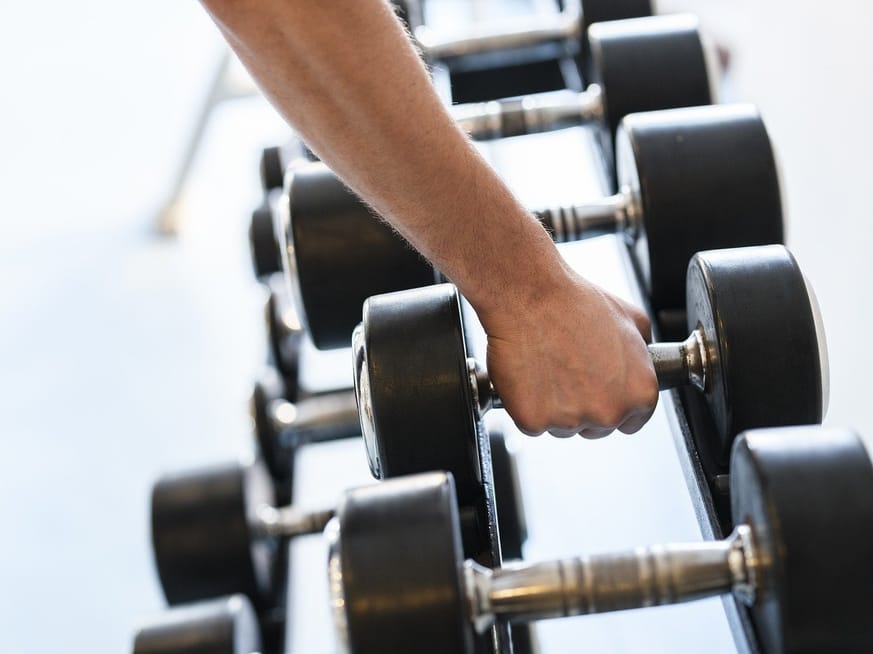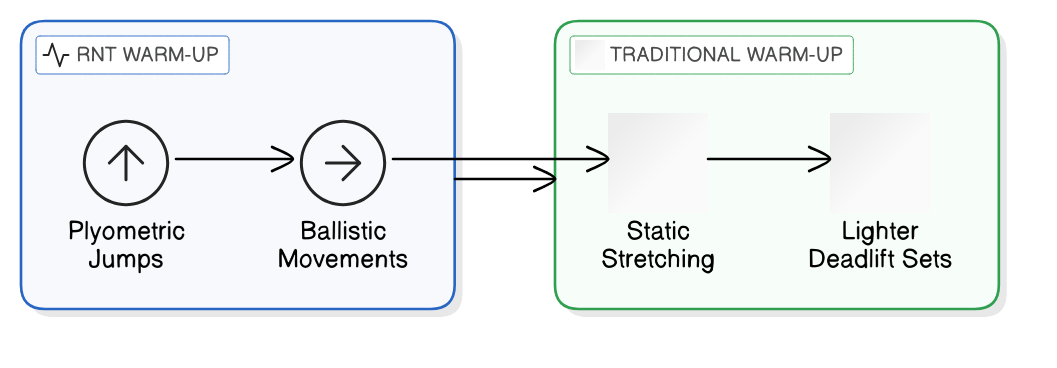Summary
This article delves into the intricacies of deadlifts, exploring not only the muscles engaged but also how to perform them safely and effectively. With personal anecdotes woven in, it highlights the importance of understanding one’s body to achieve peak performance. Key Points:
- Understanding neuromuscular efficiency can greatly enhance your deadlift performance by improving motor unit recruitment and intermuscular coordination.
- Personalized deadlift programming based on genetic predispositions allows for tailored training that optimizes muscle fiber type engagement, maximizing strength gains.
- Incorporating proprioception and kinesthetic awareness techniques, alongside connective tissue health exercises, ensures safe lifting while preventing injuries.
Deadlifts: Are They Worth the Hype?
My First Deadlift: A Story of Failure (and Triumph)
As I bent down, palms sweaty and heart racing, doubt crept in. Suddenly, I felt a sharp pull in my lower back right as I lifted the bar. “Stop! You’re arching!” Jake yelled—but it was too late; I dropped the weight with a loud thud that echoed through the gym.
Heat rushed to my cheeks as heads turned our way. “It’s okay,” Jake said gently, but disappointment settled heavily in my gut—it felt like everyone was watching me fail.
“Seriously? That was way harder than I thought,” I muttered under my breath as frustration bubbled up inside me. The day ended not with triumph but an anxious knot of defeat—a feeling that lingered long after leaving the gym that night.
| Deadlift Variation | Targeted Muscles | Difficulty Level | Common Mistakes | Recommended Technique |
|---|---|---|---|---|
| Conventional Deadlift | Lower back, Hamstrings, Glutes, Core | Intermediate to Advanced | Rounded back, Excessive weight, Poor grip | Feet shoulder-width apart; hinge at hips; keep bar close to body. |
| Sumo Deadlift | Inner thighs, Glutes, Quads, Back | Beginner to Intermediate | Incorrect foot positioning, Leaning forward too much | Wide stance; toes pointed outwards; maintain upright torso. |
| Romanian Deadlift | Hamstrings, Glutes, Lower back | Intermediate to Advanced | Bending knees too much; rounding lower back. | Slightly bend the knees; hinge at hips while keeping the bar close. |
| Trap Bar Deadlift | Quads, Hamstrings, Back”, “Core”, “Grip”, “Glutes | Beginner to Intermediate | Not using full range of motion; improper loading. | Stand in the center of the trap bar; maintain neutral spine throughout. |
| Single-Leg Deadlift | Hamstrings,” “Glutes,” “Core”,“Stability Muscles | Intermediate | Loss of balance during lift; rotating hips. | Keep one leg extended behind you while lowering weights with opposite hand. |
The Turning Point: From Frustration to Functional Strength
“Hey, you okay?” one guy asked, leaning against the wall with his arms crossed. His tone was casual but laced with concern. I nodded quickly but felt that unease creeping back in; it had been more than just an awkward moment—it seemed to ripple through those watching.
Jake noticed too. “Let’s take a breather,” he suggested gently, glancing at the growing crowd. Some people had started flipping through their phones—maybe looking up tips or videos on deadlifts? Others stood there frozen, unsure if they should offer help or simply walk away.
We all felt it—the tension hung thick in the air as if any sudden movement might break something fragile between us. And then... silence fell again, just me and that barbell looming ahead like a challenge waiting to be faced once more.
Mastering the Deadlift: Our Step-by-Step Guide for Beginners
Despite our discussions and attempts to tweak my form—shifting my feet slightly and repositioning my hands—the next lift still felt far from smooth. “We tried new methods, but results were mixed,” Jake recalled later, highlighting the tension among us. Some members remained hopeful about finding a solution; others exchanged glances that spoke of doubt.
“Let’s not rush it,” one said cautiously, while another shook his head, muttering about potential injuries. The atmosphere was thick with uncertainty as we continued to grapple with what might work best—but no one could say for sure if any change would lead to success this time around.

 Free Images
Free ImagesDeadlifts: Your Burning Questions Answered
Now, many people overlook proper form when trying out deadlifts. This is crucial because maintaining a neutral spine and engaging your core can make all the difference in preventing injuries. I remember when I first started lifting; I didn’t pay enough attention to my stance and ended up with some nagging back pain. Trust me, focusing on leg drive instead of just relying on your back will not only keep you safe but also maximize your gains!
And did you know there are different variations of deadlifts? From conventional to sumo or even Romanian styles, each one emphasizes different muscle groups due to its unique mechanics. It’s worth experimenting with these variations to see what works best for your body.
Also, if you're worried about noise or damaging your floor while lifting heavy weights, consider using rubberized plates. They really help reduce noise and allow for safer loading increments as you progress in your strength journey.
So next time you're at the gym thinking about skipping deadlifts—don’t! Embrace them as part of a well-rounded fitness routine that builds functional strength and boosts athletic performance! 🌟
Deadlifts and Your Lower Back: A Necessary Caution?
Deadlifts vs. Other Exercises: Which is Right for You?
Proper Deadlift Form: A Detailed Breakdown
Deadlifts are a cornerstone of strength training, engaging multiple muscle groups and providing immense benefits when performed correctly. However, many lifters overlook the importance of proper form, which can lead to injury and limit gains. That's why I want to share these essential steps for executing deadlifts safely and effectively.
In my early lifting days, I struggled with deadlifts until a seasoned trainer pointed out some key adjustments. Many people don't realize that even small changes in technique can make a huge difference in both performance and safety. So let's dive into how you can nail your deadlift form!
#### Step-by-Step Deadlift Setup
1. **Choose Your Equipment**
Start with a barbell and weights appropriate for your fitness level. Make sure you’re wearing flat-soled shoes for better stability—this will help maintain your balance during the lift.
2. **Foot Placement**
Stand with your feet shoulder-width apart directly under the barbell. Your toes should point slightly outward; this stance helps engage your hips effectively.
3. **Grip the Bar**
Bend at your hips and knees to lower yourself down, keeping your back straight. Grip the barbell just outside of your knees—this is typically around shoulder width or slightly wider (don’t forget: keep those arms straight!).
4. **Engage Your Core**
Before lifting, take a deep breath into your belly (not just chest) to activate your core muscles—it’s like putting on an internal weightlifting belt! This will stabilize your spine throughout the movement.
5. **Lift Off Carefully**
Now comes the crucial part: as you push through your heels, extend both hips and knees simultaneously while maintaining that neutral spine position—imagine you're trying to push the floor away from you rather than pulling up on the bar.
6. **Finish Strong**
As you reach full extension at the top of the lift (with shoulders back but not hyperextended), pause briefly before lowering it back down in a controlled manner by hinging at the hips first—think about pushing them back as if closing a car door behind you!
7. **Repeat Mindfully**
Focus on controlled movements over heavy weights; prioritize mastering this technique before progressing to heavier loads.
#### Tips & Tricks
A little personal advice: I always set a timer for 60 seconds between sets ⏱️; it keeps me focused on recovery without getting distracted or rushing through my next rep.
#### Advanced Techniques & Considerations
If you're looking to advance beyond basic deadlifting techniques, consider incorporating variations such as sumo or Romanian deadlifts for targeted muscle engagement or exploring deficit deadlifts for added challenge! Also, if you experience any pain during lifts (beyond normal exertion), take time off from lifting while consulting with a professional—it's better to be safe than sorry.
By following these structured steps and tips, you'll not only improve your deadlift form but also gain confidence in executing one of the most effective strength-building exercises available! Happy lifting!

Beyond the Basics: Exploring Deadlift Variations
Your Deadlift Journey: Consistency, Progress, and Personal Best
Progression should be gradual; increasing weight incrementally allows for adaptation without compromising form. Incorporating accessory exercises like Romanian deadlifts can bolster overall performance by enhancing hamstring strength and stability. Additionally, tracking your personal bests not only motivates but also helps identify areas needing focus in your training regimen.
As you continue on this path, remember that the fitness landscape is ever-evolving. Embrace new techniques and insights into training methods that emerge within the community. This adaptability will not only enhance your performance but also keep your workouts fresh and exciting.
Now’s the time to take action! Begin implementing these strategies into your routine and discover how they resonate with you on this journey towards achieving your personal best in deadlifting!
Reference Articles
9 Best Deadlift Variations for Workouts for Strength and Muscle
These deadlift variations will allow you to built up your lower body, back, core, and grip, whether you use a barbell ...
Source: Men's HealthThe Complete Westside Barbell Deadlift Variation Guide
The conventional deadlift will also be used as a variation for dynamic effort deadlifts, rotating every wave with the sumo deadlift.
Source: Westside BarbellHow To Deadlift Properly, Deadlift Variations & Exercise Tips - Gymshark
This article will cover the basics of the deadlift, from correct form to the different types of deadlift variations you can utilize ...
Source: gymshark.comHow to Deadlift | Deadlift Variations & Workouts
Worried about your deadlift form? See our video demonstrations for how to perform different deadlift variations safely.
Source: PureGymHere's Exactly How to Do a Deadlift (Plus 5 Variations to Try)
Once you master proper deadlift form, there are many variations you can do, Santucci says. You can add these ...
Source: Runner's WorldHow To Deadlift: Layne Norton's Complete Guide
How To Deadlift (Conventional) · 1. Plant Your Feet · 2. Get Set Up · 3. Engage Your Lats · 4. Pull · 5. Squeeze Your Glutes · 6. Lock Out · 7. Lower.
Source: Bodybuilding.comHow To Deadlift: Technique, Mistakes To Avoid And Variations
Learn the proper deadlift technique, common mistakes to avoid, and explore variations to enhance your strength ...
Source: MyproteinThe different deadlift types
There are many different types of deadlift you can do to test your strength. They vary in difficulty, range of motion, and muscles recruited.
Source: Hussle


 ALL
ALL Sports Data Science
Sports Data Science
Related Discussions